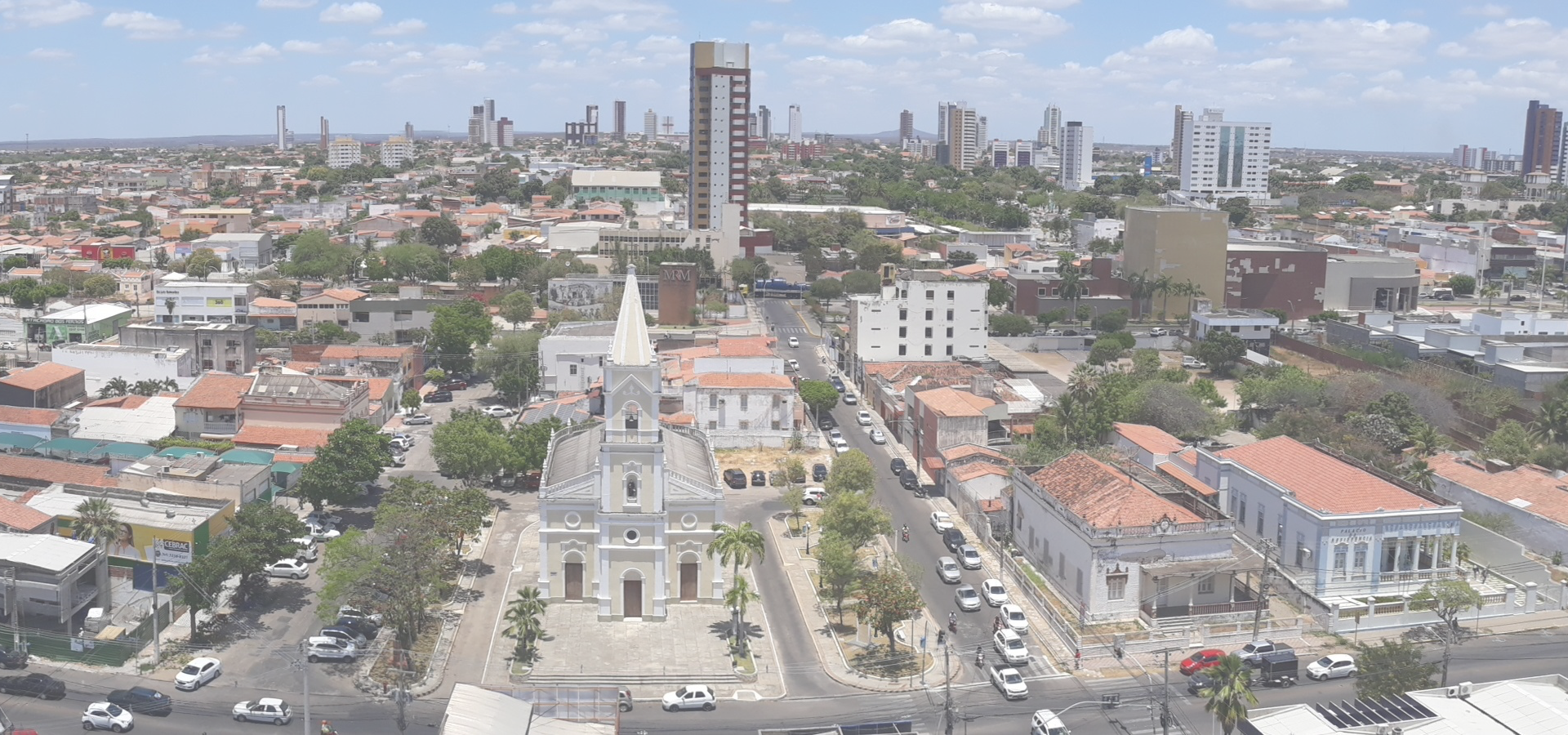Mossoró, Rio Grande do Norte, Northeast Region, Brazil
🇧🇷 Mossoró is the second most populous city in the state of Rio Grande do Norte, Brazil, and also the largest municipality of that state. It is equidistant from Natal, the state capital of Rio Grande do Norte, and from Fortaleza, the capital of the state of Ceará. It is also in the heart of Brazil's salt production area. Situated in the Oeste Potiguar mesoregion, Mossoró is the country's largest land-based petroleum producer.
History To Brazilians, the main historical distinctions of the city are the driving off an attack by Lampião and his gang of "social bandits" (see Cangaço) that plundered entire towns in the sertão during the 1920s and 1930s; and also the fact that the city freed its slaves five years before the Lei Áurea abolished slavery in the rest of the country in 1888. Mossoró was also the first city to give women the right to vote in Brazil (Professor Celina Guimarães Viana cast the first vote in 1928), sparking a movement among other cities and states in Brazil that culminated in the official recognition of women's suffrage by the national government in 1934.
Culture and recreation Although it does not have beaches within its city limits, there are several magnificent beaches in the surrounding area of the Costa Branca Pole such as the desert beaches of the city of Areia Branca. World-famous Canoa Quebrada beach is a short drive away in the neighboring state of Ceará.
The Resistance Museum tells the story of the city and the city's native sons. However, the most famous attraction is the Mossoró Cidade Junina (Mossoró Junina City Festival), a winter festival (festa junina) that attracts more than a million people during the month of June.
The city has a beautiful historic town, a hub of fascinating stories of the region's development. Main attractions include the Museu Municipal Jornalista Lauro da Escóssia (Journalist Lauro da Escóssia Municipal Museum), also known as the Cangaço Museum, the Station Arts old railway station museum, the Oil Museum, St. Vincent Church, and the Cathedral of Santa Luzia. Other attractions include the famous Palace of Resistance, former residence of mayor Rodolfo Fernandes who was the leader of the resistance against the "Lamp band" (Lampião) and served as a rampart against attacks from those notorious bandits. There is also the Bode Market, an ovine and caprine trading centre where traders and buyers of sheep and goats continue the long-held rural traditions of the north-east, as well as the famous Central Market and the Railway Bridge.
In September, the city stages what could be the largest play in the world, the Auto Da Liberdade (The Procession of Liberty) with an all-paid cast of 2,000 and a 600-member chorus as part of its Festa da Liberdade (Brazilian independence celebrations).
Mossoró also has a shopping centre, Mossoró West Shopping, which includes a 5-screen multiplex cinema, Wi-Fi internet connectivity, children's recreation and diaper changing area, ATMs, bowling alley, pharmacy, and food court among its many amenities.
Mossoró is also home to the Hotel Thermas Resort which is the largest thermal water park in Brazil. The heated water used in the resort arises from a zone of geothermal hot springs located in the vicinity of the city. The city is the seat of the Roman Catholic Diocese of Mossoró.
Colleges and Universities The Federal University of the Semi-Arid is located in Mossoró. The following have campuses in the city: • Faculdade de Ciências e Tecnologia Mater Christi • Faculdade de Enfermagem Nova Esperança de Mossoró - FACENE/RN • Universidade do Estado do Rio Grande do Norte.
Airports Mossoró is served by the following airports: • Mossoró Airport (Dix-Sept Rosado Airport) - 2.7 km away • Aeroporto Internacional de Fortaleza (Pinto Martins International Airport) - 205.2 km away • Aeroporto Internacional de Natal/Augusto Severo International Airport (Wikipedia page) - 245.8 km away (handed over to the Brazilian Air Force at the end of 2013, only for military use) • Aeroporto Internacional da Grande Natal or Greater Natal International Airport (Opened to replace the old airport, the only airport that handles civil aviation in the area).
Highways • BR-304 • BR-110 • BR-405 • BR-437.
Mossoró, Rio Grande do Norte, Northeast Region, Brazil
Mossoró has a population of over 300,600 people. Mossoró also forms one of the centres of the wider Rio Grande do Norte state which has a population of over 3,506,853 people.
To set up a UBI Lab for Mossoró see: https://www.ubilabnetwork.org Twitter: https://twitter.com/UBILabNetwork
🇧🇷 Açailândia -4.933
🇨🇬 Pointe-Noire -4.795
🇧🇷 Quixeramobim -5.2
🇨🇩 Mbanza-Ngungu -5.25
🇮🇩 Bandar Lampung -5.45
🇧🇷 Imperatriz -5.526
🇧🇷 Ceará-Mirim -5.633
🇧🇷 Santana do Ipanema -37.233
🇧🇷 Nossa Senhora do Socorro -37.139
🇧🇷 Girau do Ponciano -36.817
🇧🇷 Pau dos Ferros -38.206
🇧🇷 Paulo Afonso -38.224
🇧🇷 Serra Talhada -38.295
🇧🇷 Lauro de Freitas -38.327
Locations Near: Mossoró -37.3333,-5.18333
🇧🇷 Macau -36.635,-5.113 d: 77.7
🇧🇷 Aracati -37.767,-4.55 d: 85.2
🇧🇷 Pau dos Ferros -38.206,-6.112 d: 141.4
🇧🇷 Caicó -37.083,-6.45 d: 143.5
🇧🇷 Currais Novos -36.511,-6.261 d: 150.5
🇧🇷 Aquiraz -38.367,-3.9 d: 183
🇺🇸 Frederick -38.367,-3.9 d: 183
Antipodal to: Mossoró 142.667,5.183
🇮🇩 Jayapura 140.72,-2.529 d: 19130.7
🇵🇼 Ngerulmud 134.627,7.487 d: 19090.4
🇬🇺 Hagåtña 144.746,13.467 d: 19066.2
🇬🇺 Tamuning 144.767,13.483 d: 19063.9
🇬🇺 Dededo 144.836,13.515 d: 19058.6
🇲🇵 Saipan 145.753,15.189 d: 18852.5
🇮🇩 Manokwari 134.083,-0.867 d: 18848.3
🇵🇬 Mount Hagen 144.22,-5.865 d: 18774.6
